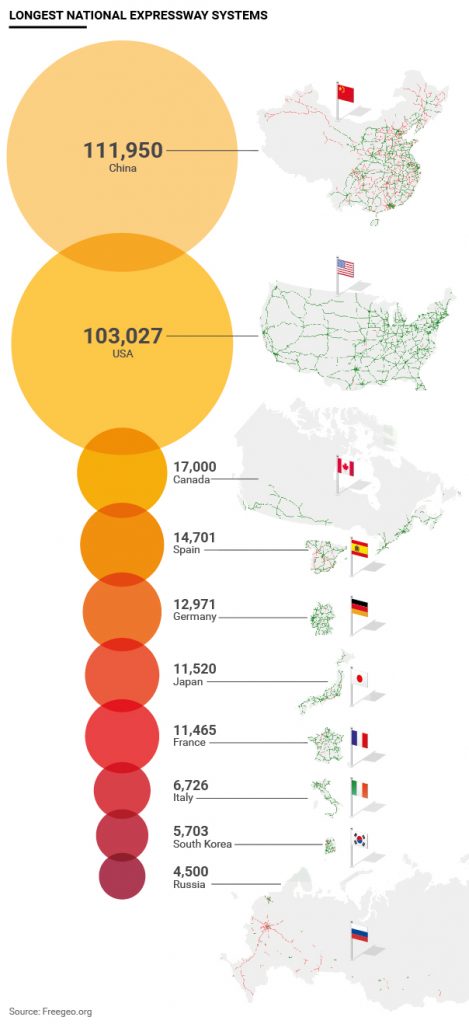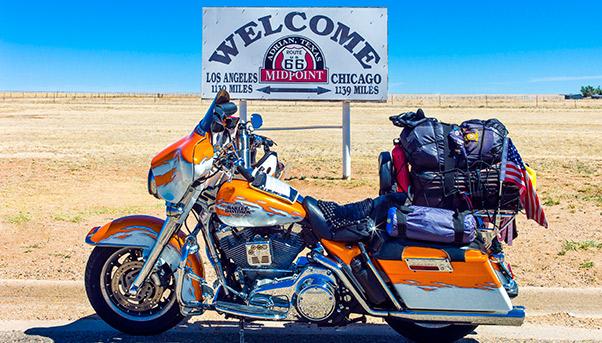
“Sal, we gotta go and never stop going till we get there.”
“Where we going, man?”
“I don’t know but we gotta go.”
Just these few words, taken from the classic novel “On The Road” by Jack Kerouac, are needed to capture the meaning of the word “road”, this infrastructure of travel and discovery, product of humankind’s curiosity and desire to know, uniter of peoples and cultures, all of which leads to social and economic growth.
The road is the link between two points, a means to shorten distances.
The Ancient Romans – who built a vast network of roads for military, political and commercial purposes – were all too aware of this. So were the empires that gave life to remarkable public works that changed the morphology of continents.
There is the Royal Road of Persia, the network built in the fifth century before Christ by Darius I that crossed present day Turkey and enabled the king’s couriers to expedite messages across more than 2,000 kilometres in seven days. Then there is the Silk Road, which facilitated trade across some 8,000 kilometres between the Chinese and Roman empires. There is also the Siberian Route (begun in 1730 and completed only in the middle of the 19th century) that linked European Russia with Siberia and China. More recently there is the Panamerican Highway, which stretches nearly 26,000 kilometres from north to south along the American continent, from the Alaskan cold to the oceans of Cape Horn.
These are four examples that stretch across the centuries to arrive at contemporary history. From the cobblestones of the Aurelia to the crowded highways of the United States, the role of the road – a symbol of human development – remains unchanged.
The World Race

American Excellence
In 1903, Horatio Nelson Jackson became the first person to drive a car the more than 4,000 kilometres between New York and San Francisco. He did it by using the embryonic road network that in the following decades would become a symbol of development and economic supremacy of the United States.
By 1910, many U.S. states began building their own road networks. In 1918, Wisconsin was the first to identify its highways with numbers. Four years later, New England inaugurated the New England Interstate Routes. In those years, the federal government began to set aside funds to contribute to the development of a national road network and found private partners who had the technical ability to carry it out.
This is the story of Lane Industries Inc (whose acquisition by Salini Impregilo was completed in January). Founded in 1890, it became one of the protagonists of the construction of the Interstate Highway System. It has since become a company with 5,000 employees and $1.5 billion in annual revenue.

Highway in Texas
In the coming years, Lane and others in the construction sector will have their work cut out for them as President Barack Obama has earmarked $317 billion worth of spending on the National Highway System inside the Grow America Act.
It is a huge but necessary investment. Although the American expressway network has been surpassed by the one in China, the combined number of highways (which have more entry and exit points and handle slower speeds) cover 253,000 kilometres, leading to a combined total of 6.4 million kilometres across the United States. It is a huge asset that sustains three trillion vehicle crossings every year.
Chinese Record
China’s asphalt dream began in 1990 but it still endures. It’s called the National Trunk Highway System (NTHS) and it is a network of expressways and high-speed roads that, once completed, will cost $240 billion. In 2011, the network had reached 85,000 kilometres (11,000 of which built last year).
The government’s expectations still surprise: by 2020, it foresees the entire network of expressways and highways reaching three million kilometres.
The project, which takes inspiration from the Interstate Highway System of the United States, follows a simple concept: the network stretches from Beijing to the provincial capitals and cities with more than 200,000 residents. In this way, the network expands and commerce multiplies, using the big roads as if they were feeding canals supporting China’s growth.
European Project
As a densely populated continent, Europe boasts one of the most extensive networks in the world. After Spain and Germany (both of which have the most kilometres of expressways) there is the France network with 11,465 kilometres and Italy with 6,726 kilometres.
Italy (with the support of companies like Salini Impregilo) was the first country on the continent to build a highway network even though it would eventually be surpassed by Germany with its Autobahn and then by France and Spain. In recent years, Spain has a busy period building highways, facilitated by the fact that it has areas that are scarcely populated, making it easier to install infrastructure.
Although Europe’s highway network has been traditionally managed by national governments, the European Union has developed projects and investments to unite the management of these varied networks.

Atlantic road, Norway
One of the most significant results is the Trans-European Networks (TEN) project that foresees the creation of a transport network of 90,000 kilometres of roads and highways by 2020. In addition to building new roads, the plan is to manage the care and safety of the existing ones.
As confirmed by statistics, the modernization and monitoring of the varied European networks represent a strategic factor for the growth of the continent’s economy. The transportation section of the EU’s 28 member states produces €548 billion in added value every year – in addition to guaranteeing 11 million jobs.

